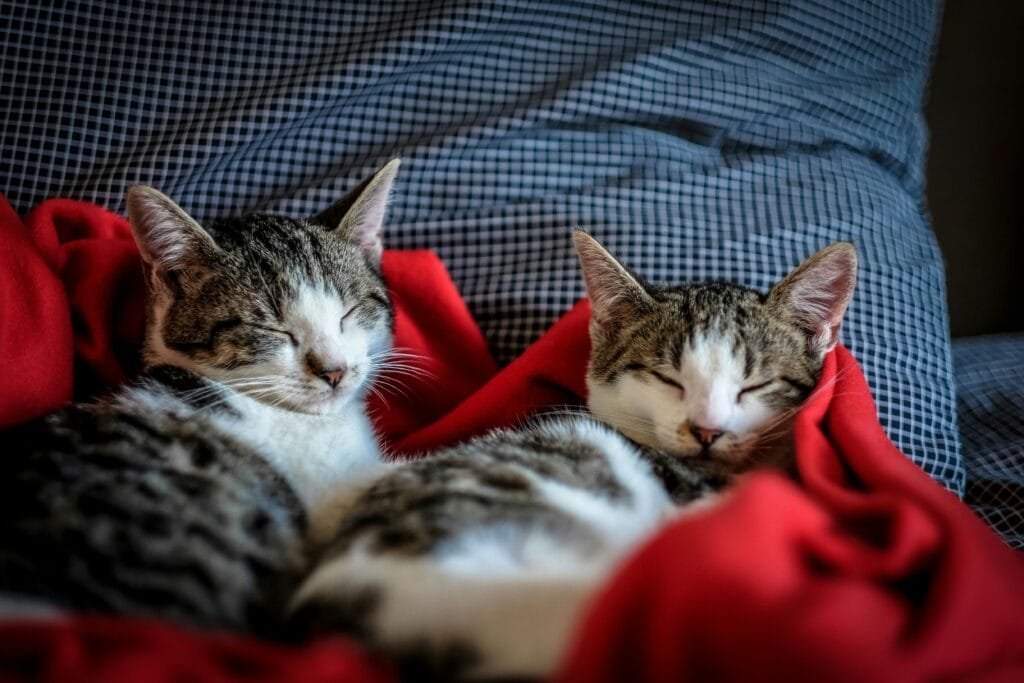“Knowing your cat’s individual preferences for closed and open beds will help you find the perfect place for them to sleep. Because they are known to be independent animals, cats frequently display unique sleeping habits. In this extensive article, we explore the fascinating query: Open Beds vs. Closed Beds for Feline Friends? By solving this puzzle, we hope to offer insightful advice on how to create a comfortable and welcoming sleeping space that is customized to meet your cat’s specific needs.”
Open Beds vs. Closed Beds for Feline Friends
When it comes to their sleeping arrangements, cats are discriminating animals. Open beds, like soft blankets or cushioned mats arranged in easily accessible areas, provide flexibility and visibility, which appeals to cats that like to sprawl out and take in their surroundings while they sleep. Conversely, closed beds, such as hooded beds or enclosed caves, offer a feeling of seclusion and safety by imitating natural hiding places, which helps calm shy or nervous cats. Cat owners may establish a peaceful resting environment that supports the health and wellness of their feline pet by being aware of these preferences.
Factors Influencing Cats’ Bed Preferences
Cats’ inclinations regarding open or closed beds can be impacted by a number of variables, including age, personality types, and prior encounters. Due to their curiosity and need for exploration, younger or more gregarious cats may favor open beds, whereas more reserved or elderly cats may favor the warmth and privacy of closed beds. It’s also possible that cats with traumatic or stressful histories feel safer in enclosed sleeping areas, which emphasizes the significance of taking into account each cat’s individual history when selecting the best kind of bed.

Observing and Adapting: Tailoring Beds to Your Cat’s Needs
Observation and adaption are two of the best ways to find out if your cat prefers an open or closed bed. Provide your cat a range of bed options in various locations and types throughout your house, and observe which ones they instinctively choose. Comfort indicators include regular use, untroubled body language during sleep, and a lack of stress-related behaviors, which can all be signs that your cat is comfortable in the chosen bed. Your cat will have a peaceful and restful sleep if you are adaptable and ready to make changes to the resting space in response to your cat’s input.
Choosing the Right Bed Style: Factors to Consider
Many considerations must be made while choosing a cat bed. Make sure there’s adequate room for your cat’s size as well as your own for comfortable stretching and moving around in the bed. Another important consideration is the bed’s material; choose fabrics that are easy to clean and comfortable, non-irritating. Additionally, consider how the open, closed, or semi-enclosed bed’s design complements your cat’s sleeping style and preferences.
Creating a Cozy Sleep Environment: Tips and Tricks
Improve your cat’s sleeping space by adding components that encourage calm and relaxation. Set up the bed in a peaceful, low-traffic section of your house to reduce noise while you sleep. For added coziness and warmth, think about including a cushion or soft blanket. Inviting your cat to relax and have a restful sleep may also be achieved with the help of ambient lighting and temperature control.

Transitioning Between Open and Closed Beds:
Calm Approaches When switching your cat from one kind of bed to another, proceed cautiously and gradually. Let your cat explore and get used to the new bed next to their old one so they may do it at their own time. When your cat shows interest in using the new bed or displays interest, give positive reinforcement like praise or treats. As you assist your cat in adjusting to their favorite sleeping position, patience and consistency are essential for a seamless transition and ongoing comfort.
Tips for Creating a Comfortable Sleep Environment for Your Cat:
Provide variety:
To suit your cat’s tastes, provide a variety of bed styles, such as open, closed, and semi-enclosed options.
Location matters:
To encourage undisturbed sleep, position the bed in a peaceful, private space far from other people’s activities and noise.
Choose quality materials:
For long-term comfort, choose textiles that are soft, long-lasting, and simple to clean and maintain.
Consider warmth:
Incorporate blankets or heated pads to make sure the sleeping area is comfortable and warm, particularly in the winter months.
Be patient:
Give your cat some time to get used to new beds and surroundings; if they exhibit discomfort or reluctance, don’t force them to use a specific bed.
Regular cleaning:
To encourage regular use and excellent hygiene from your cat, keep the bed fresh and odor-free.
Conclusion:
Recognizing each cat’s unique preferences—which can be impacted by age, personality, and prior experiences—is essential to figuring out whether they prefer open or closed beds. Some cats like the quiet and protection of closed beds, while others relish the freedom and visibility of open beds. You may create a cozy and welcoming sleeping space that meets your cat’s needs by paying attention to how your cat behaves and offering a range of bed options.


